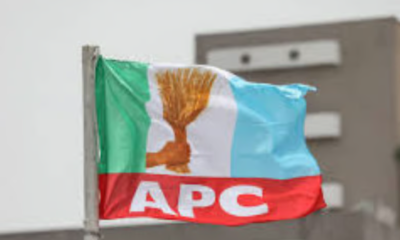Members of the Central Bank of Nigeria Monetary Policy Committee (MPC) have raised concerns over the persistent low level of credit by financial institutions to the private sector, regardless of the improvement in all financial system indicators (FSI).
In their personal statements at the January MPC meeting released members stressed the need for banks to cut back on their appetite for government securities and increase lending to the private sector.
According to Adenikinju Festus, a member of the committee, while a positive trend is being recorded on all FSI, “aggregate credit expansion to the real economy continues to pose serious challenges. Net credit growth to the private sector is lower than provisional benchmark for 2018.”
Adenikinju, who noted that the monetary authority should not lower its guard and must continue to monitor the banks and implement policies toconsolidate and further improve FSI, said the high interest rate spread and the high lending rates are challenges that require new and innovative approaches.
On his part, Adamu Lamatek said deposit money banks need to step up credit delivery to the growth inducing sectors such as agriculture, manufacturing, and services especially. “The last couple of months have witnessed a sustained improvement in banking sector resilience – industry capital adequacy and liquidity ratios have grown, while the
non-performing loans (NPLs) ratio is on the decline.
“This should translate to improved intermediation to be relevant. While monetary policy has to accommodate the need to sustain current improvements in banking industry Financial Soundness Indicators (FSIs), the DMBs would need to moderate their appetite for government securities and oil & gas assets in order to gradually re-balance their asset portfolios.”
On the banking system, CBN staff report indicate modest improvement of the indicators as compared to the situation at the MPC meeting of November 2018. Both the Capital Adequacy Ratio and the Non-Performing Loans (NPLs) Ratio showed positive signs in December 2018 and partly attributed to some prompt corrective actions taken by the Central Bank.
On the profitability indicators (ROE and ROA), there were mixed signals based on the December 2018 data. While ROE increased marginally between October and December 2018, the ROA decreased marginally during the same
period. Of key concern however, is the trend in total bank credit which reduced in November 2018 and further in December but surprisingly total bank assets increased between November 2018 and December.
The inverse movement between bank total assets and bank total credit at the same time may simply be as a result of banks’ excessive interest in securitization and other non-traditional banking activities rather than real sector lending. The negative implications of this credit reluctance by banks in a period of economic recovery have been discussed severally and remain significantly limiting for the economy.
The MPC members were however pessimistic on the economy whose growth
they tied to the oil sector, stressing the need for fiscal policy makers
to formulate policies that will spur growth in the non oil sectors.
Stating that Nigeria’s economic growth remains fragile and weak after exiting from the 2016 recession in 2017, Balami Hassan noted that Nigeria’s growth rate of less than two percent is far lower than the population growth of 2.82 per cent. “The assumption of growth rate at 3.01 per cent will also be possible only if there is improvement in access to credit to the real sector of the economy particularly for the small and medium scale enterprises (SMEs), small holder farmers and increase in the level of consumption in the economy by households. “Diversification of the economy is therefore necessary particularly in the areas of manufacturing, mining and agricultural sector to promote economic growth” he stated.
Likewise Obadab Idiah noted that the outlook for growth remains fragile as the contraction in the oil sector poses risks to the achievement of the growth target of 4.8 percent in the Economic Recovery and Growth Plan (ERGP) in 2018. “It is thus necessary for monetary policy to continue to support growth through facilitating access to bank credit at affordable cost and with both conventional and non-conventional strategies.”

 Football1 week ago
Football1 week ago
 Health & Fitness2 days ago
Health & Fitness2 days ago
 Featured6 days ago
Featured6 days ago
 Comments and Issues1 week ago
Comments and Issues1 week ago
 Education7 days ago
Education7 days ago
 Business6 days ago
Business6 days ago
 Crime7 days ago
Crime7 days ago
 Business6 days ago
Business6 days ago

